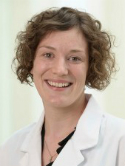Phase 2 study of dose-dense doxorubicin and cyclophosphamide followed by eribulin mesylate with or without prophylactic growth factor for adjuvant treatment of early-stage human epidermal growth factor receptor 2–negative breast cancer Journal Article
| Authors: | Cadoo, K. A.; Kaufman, P. A.; Seidman, A. D.; Chang, C.; Xing, D.; Traina, T. A. |
| Article Title: | Phase 2 study of dose-dense doxorubicin and cyclophosphamide followed by eribulin mesylate with or without prophylactic growth factor for adjuvant treatment of early-stage human epidermal growth factor receptor 2–negative breast cancer |
| Abstract: | We investigated eribulin as adjuvant therapy after dose-dense doxorubicin and cyclophosphamide for patients with human epidermal growth factor receptor 2–negative early-stage breast cancer. The primary end point of feasibility of this regimen was not met, even with mandatory prophylactic growth factor support with eribulin treatment. Unexpected adverse events were not observed with this regimen, and most patients were able to receive full doses without dose delay or reduction. Background: Eribulin has significantly improved overall survival for patients with metastatic breast cancer who received ≥ 2 prior chemotherapy regimens for advanced disease. This trial assessed eribulin as adjuvant therapy for patients with early-stage breast cancer. Patients and Methods: Patients with human epidermal growth factor receptor 2–negative, stage I to III breast cancer received doxorubicin 60 mg/m2 and cyclophosphamide 600 mg/m2 provided intravenously on day 1 of each 14-day cycle for 4 cycles, with pegfilgrastim on day 2, followed by 4 cycles of eribulin mesylate 1.4 mg/m2 provided intravenously on days 1 and 8 every 21 days. There were 2 cohorts, as follows: cohort 1: no prophylactic growth factor with eribulin (allowed at physician's discretion only); cohort 2: prophylactic filgrastim with eribulin. The primary end point was feasibility, defined as the percentage of patients who completed the eribulin portion of the regimen without a dose omission, delay, or reduction due to an eribulin-related adverse event. Relative dose intensity of eribulin and toxicities are summarized by cohort. Exploratory end points included 3-year disease-free survival and overall survival. Results: Eighty-one patients (cohort 1, n = 55; cohort 2, n = 26) entered the treatment phase; 88% completed treatment. Feasibility was 72.9 % (90% confidence interval, 60.4, 83.2) in cohort 1 and 60.0% (90% confidence interval, 41.7, 76.4) in cohort 2. The most frequent eribulin-related adverse events (all grades) were fatigue (75.9%), peripheral neuropathy (54.4%), nausea (39.2%), neutropenia (35.4% [31.5% of patients in cohort 1; 44.0% in cohort 2]), and arthralgia (26.6%). Conclusion: The primary end point of > 80% feasibility was not met. No unexpected adverse events were observed, and 62% of patients received full dosing with no dose delay or reduction. Further investigation of this regimen with alternative dosing schedules or use of growth factors could be considered. © 2018 The Authors |
| Keywords: | chemotherapy; dose intensity; treatment feasibility; her2-negative breast cancer |
| Journal Title: | Clinical Breast Cancer |
| Volume: | 18 |
| Issue: | 6 |
| ISSN: | 1526-8209 |
| Publisher: | Elsevier Inc. |
| Date Published: | 2018-12-01 |
| Start Page: | 433 |
| End Page: | 440.e1 |
| Language: | English |
| DOI: | 10.1016/j.clbc.2018.04.001 |
| PROVIDER: | scopus |
| PMCID: | PMC6174098 |
| PUBMED: | 29895438 |
| DOI/URL: | |
| Notes: | Clin. Breast Cancer -- Export Date: 2 January 2019 -- Article -- CODEN: CBCLB -- Source: Scopus |
Altmetric
Citation Impact
BMJ Impact Analytics
Related MSK Work







